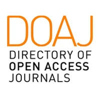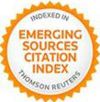Abstract
The h-index has become more popular nowadays and is used for some scientific performance criteria worldwide. This indexing method does not correctly measure any performance or career specifications because of the parameters used to form the measurement basis. The h-index is located based on citation(C) and paper(N) parameters that involve no logical criterion on the counting process, and so measurement on this basis can only give quantity results not any quality information. Therefore, we need a new indexing instrument to find out also the scientific quality unique to an individual author even if that takes into account the effect of multiple coauthorships. Ipso facto, we create a new bibliometric indicator or academic performance indicator called the u-index.
Keywords
Full Text:
PDFDOI: http://dx.doi.org/10.2423/i22394303v14n1p277
References
Alonso, S., Cabrerizo, F. J., Herrera-Viedma, E., & Herrera, F. (2009). h-Index: A review focused in its variants, computation and standardization for different scientific fields. Journal of informetrics, 3(4), 273-289.
Bi, H. H. (2023). Four problems of the h-index for assessing the research productivity and impact of individual authors. Scientometrics, 128(5), 2677-2691.
Bornmann, L., & Marx, W. (2011). The h index as a research performance indicator. European Science Editing, 37(3), 77-80.
Bornmann, L., Mutz, R., Hug, S. E., & Daniel, H. D. (2011). A multilevel meta-analysis of studies reporting correlations between the h index and 37 different h index variants. Journal of Informetrics, 5(3), 346-359.
Bornmann, L. (2014). h-Index research in scientometrics: A summary. Journal of Informetrics, 8, 749-750.
Bornmann, L., & Marx, W. (2014). How to evaluate individual researchers working in the natural and life sciences meaningfully? A proposal of methods based on percentiles of citations. Scientometrics, 98(1), 487-509.
Garfield, E. (1972). Citation analysis as a tool in journal evaluation: Journals can be ranked by frequency and impact of citations for science policy studies. Science, 178(4060), 471-479.
Garfield, E. (2006). The history and meaning of the journal impact factor. JAMA, 295(1), 90-93.
Glänzel, W., & Persson, O. (2005). H-index for Price medalists. ISSI Newsletter, 1(4), 15-18.
Glänzel, W. (2006). On the h-index-A mathematical approach to a new measure of publication activity and citation impact. Scientometrics, 67(2), 315-321.
Gross, P. L., & Gross, E. M. (1927). College libraries and chemical education. Science, 66(1713), 385-389.
Hirsch, J. E. (2005). An index to quantify an individual's scientific research output. Proceedings of the National academy of Sciences, 102(46), 16569-16572.
Ioannidis, J. P., & Thombs, B. D. (2019). A user’s guide to inflated and manipulated impact factors. European journal of clinical investigation, 49(9), e13151.
Kreiner, G. (2016). The slavery of the h-index—measuring the unmeasurable. Frontiers in human neuroscience, 10, 556.
Lotka, A. J. (1926). The frequency distribution of scientific productivity. Journal of the Washington academy of sciences, 16(12), 317-323.
Van Leeuwen, T., Visser, M., Moed, H., Nederhof, T., & Van Raan, A. (2003). The Holy Grail of science policy: Exploring and combining bibliometric tools in search of scientific excellence. Scientometrics, 57(2), 257-280.
Van Raan, A. F. (2005). Fatal attraction: Conceptual and methodological problems in the ranking of universities by bibliometric methods. Scientometrics, 62(1), 133-143.
Wilhite, A., Fong, E. A., & Wilhite, S. (2019). The influence of editorial decisions and the academic network on self-citations and journal impact factors. Research Policy, 48(6), 1513-1522.
Yong, A. (2014). Critique of Hirsch’s citation index: A combinatorial Fermi problem. Notices of the American Mathematical Society, 61(9), 1040-1050.
Zhang, L., & Glänzel, W. (2012). Where demographics meets scientometrics: Towards a dynamic career analysis. Scientometrics, 91(2), 617-630.
Article Metrics
Metrics powered by PLOS ALM
Refbacks
- There are currently no refbacks.
Copyright (c) 2024 Ugur Saglam, Fatih Canata

This work is licensed under a Creative Commons Attribution-NonCommercial-NoDerivatives 4.0 International License.
SCIRES-IT, e-ISSN 2239-4303
Journal founded by Virginia Valzano






